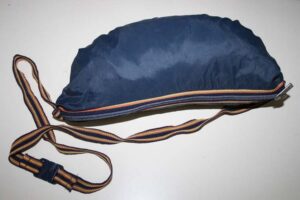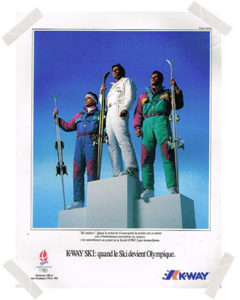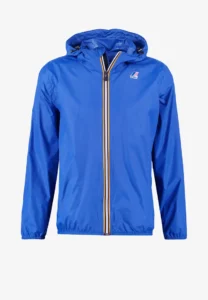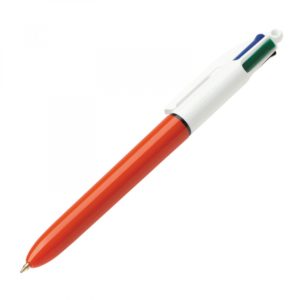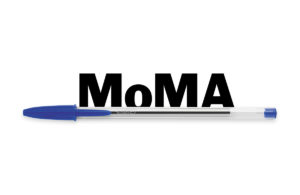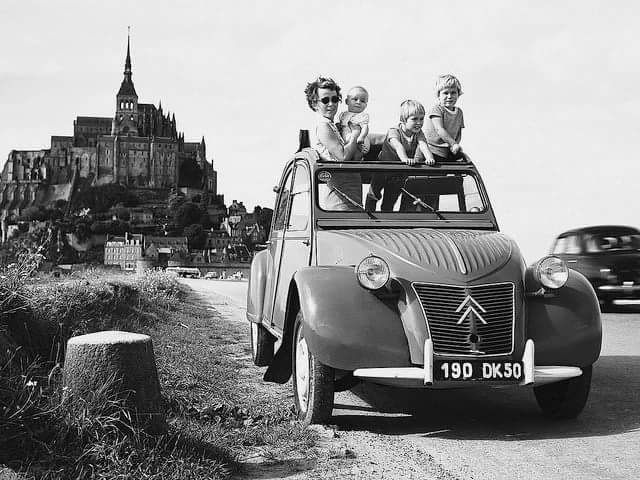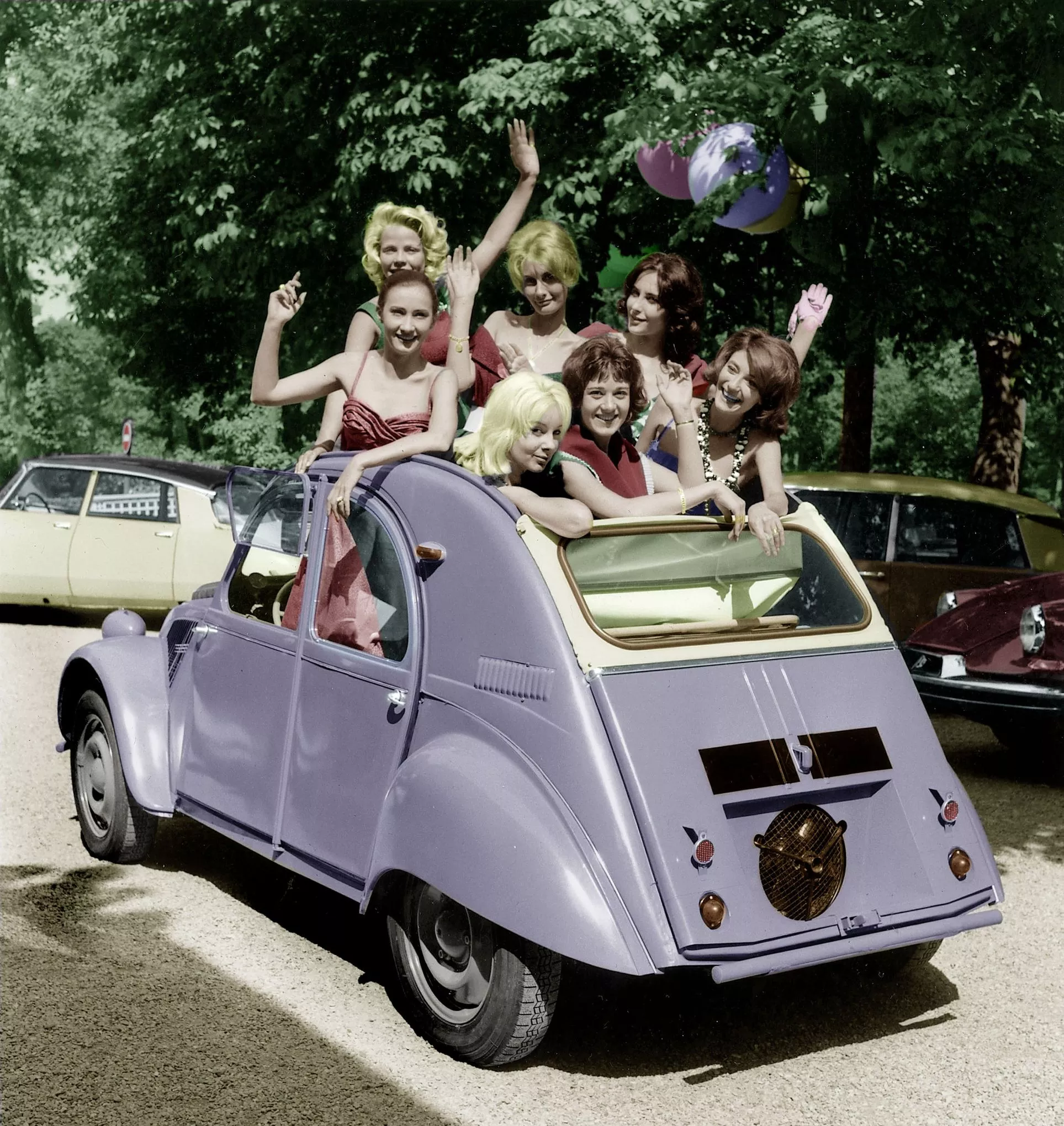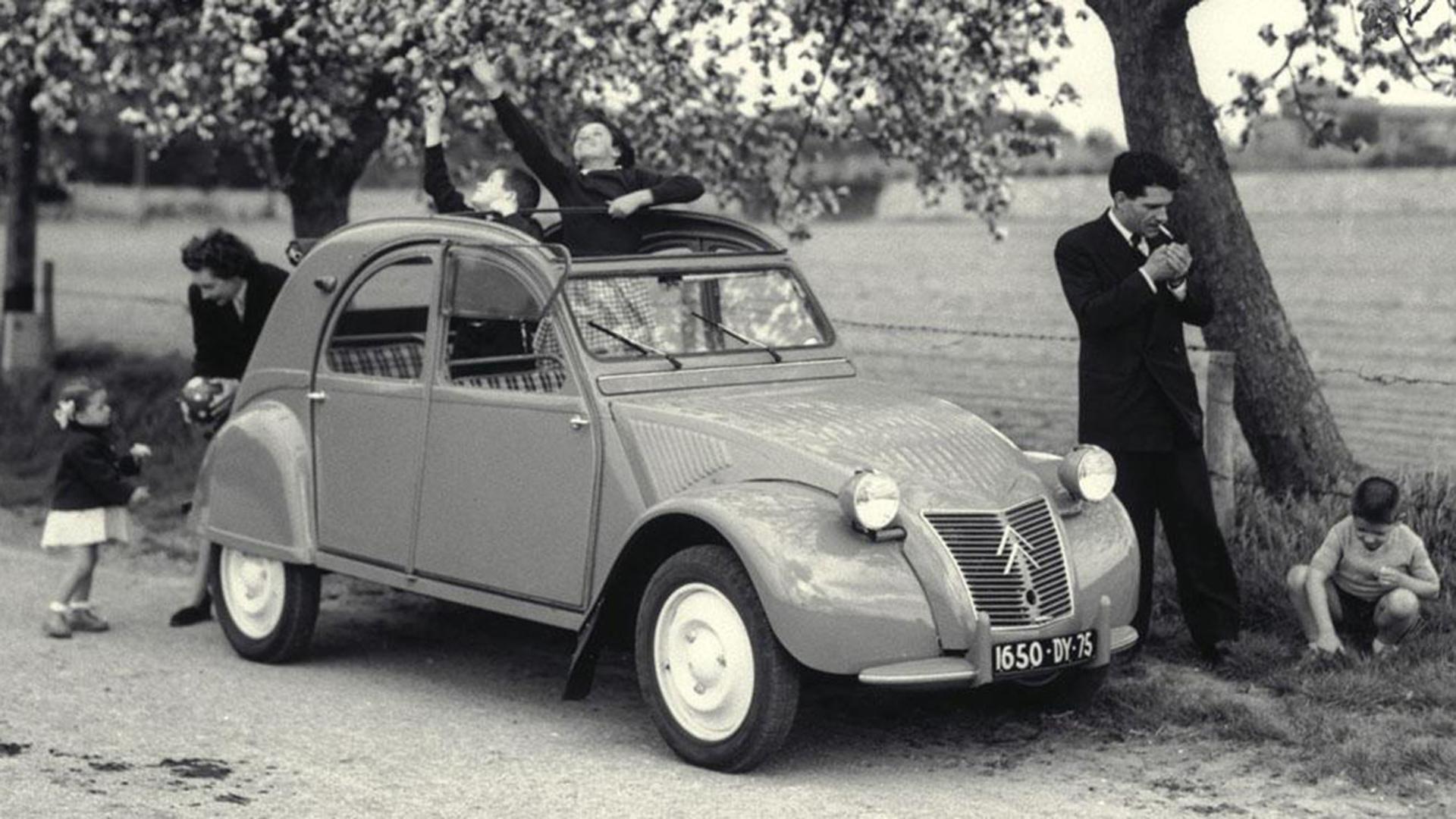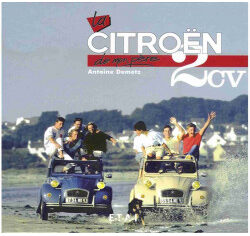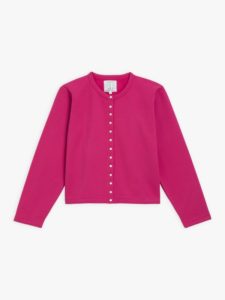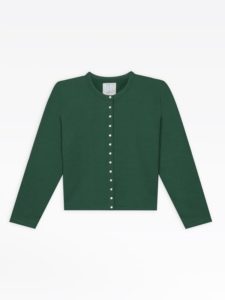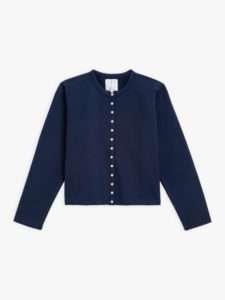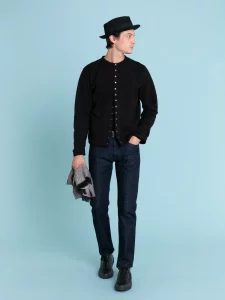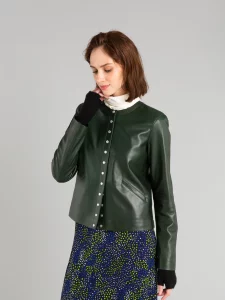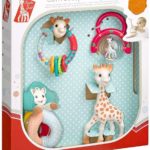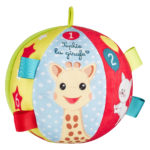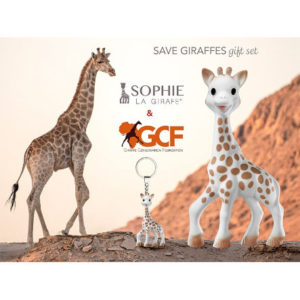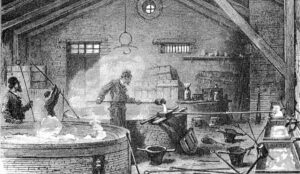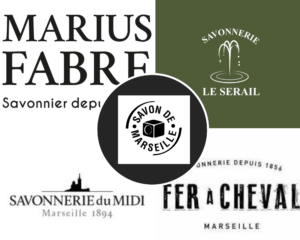-

The K-WAY
The famous nylon wind & waterproof jacket!
It was created in 1965 by Leon Claude DUHAMEL, the descendant of a textile industry family from the north of France.
Its name comes from the French expression “en cas… “(de vent, pluie…) = “in case …”(of wind, rain…) = “en K” , which became “K-WAY” brand in 1966.
The colored and foldable clothing was modern and revolutionary. You could easily carry it everywhere, with its typical banana-form pouch clipped around your hips!
It was part of young people’s clothing in the years 1970/1980.
But believe me, it was not so easy to slip on & off this jacket without suffocating !!! Because no full frontal zip was included in the first patterns… And you were sweating so much in this plastic clothing; our French humorist guys were right in saying that this was the only waterproof jacked where you were also so wet inside ! (see part of the K-WAY sketch from our French humorist Danny BOOM !)
Millions of units had been sold and product models were developed for sports (the French national ski team, sail/bicycle/ moto sports)
The success story lasted till the 80’s; then, the foreign competition and the 1992 fire (which destroyed totally the manufacture and its archives) undermined the company. The production units were then relocated outside France.
In the years 2004, the Italian group Basic Net (owner of KAPPA, SUPERGA brands, etc…) bought the K-Way brand.
The K-WAY style now means higher quality, fashion signatures, diversified collections and, of course…higher prices.
Versions du « Claude 3.0 ». You can buy the K-WAY products in the K-Way shops in Paris, on the French e-shop (deliveries limited to Europe) or USA e-shop.
-

The BIC pen
The BIC ballpoint pen was created in 1950 by Marcel BICH, a French manufacturer of writing instrument parts.
He had previously bought the rights to a ballpoint pen license registered by the Hungarian Laszlo Jozsef Biro. And after modifying and improving the idea, Mr. BICH introduced his own good quality version, at an affordable price. It was a speedy success because the new pen eased the writing and could adapt to everybody writing style.
Since then, the BIC company started its international expansion and creative developments (1970 – BIC 4 colors pen / 1973 – BIC pocket lighter / 1975 – 1st one piece razor / 1993 – BIC evolution pen, a graphic & coloring pencil made with recycled materials / 2004 – 3 blades one-piece razor).
Now, the BIC group has 24 manufacturing plants worldwide, more than 13000 employees and over 4 millions retail points. I am sure you can find a BIC product nearly everywhere in the world!
Did you know that:
1/ The BIC pen allows one to write during a 2 kilometers distance
2/ The hole in the pen cap was created in the 80′ to avoid suffocating problems in case the user swallows the cap (did you not spend your studying hours chewing this plastic cap ?… 🙂 )
3/ The iconic BIC products (ballpoint pen, pocket lighter & one piece blaze) became permanent parts of the Design Collection of the MoMa – New York (2001) and the Pompidou Center – Paris (2006).
4/ Since 2016, the BIC Corporate Foundation has supported educational initiatives worldwide, offering pens, pencils, and markers.
5/ The BIC company also dedicated itself to art:
It created the “Art Master ball pen art contest” to encourage talents across Africa and the Middle East.
But it also owns of a Contemporary Art Collection of recognized or upcoming artists. All the works of Art have been created with or inspired by BIC products.
6/ Some artists adopted the BIC ball pen as their unique means of expression ( the incredible drawings of Mr. Enam Bosokah from Ghana are a fantastic example!)
Yes, this is what we call the ransom for success!
-
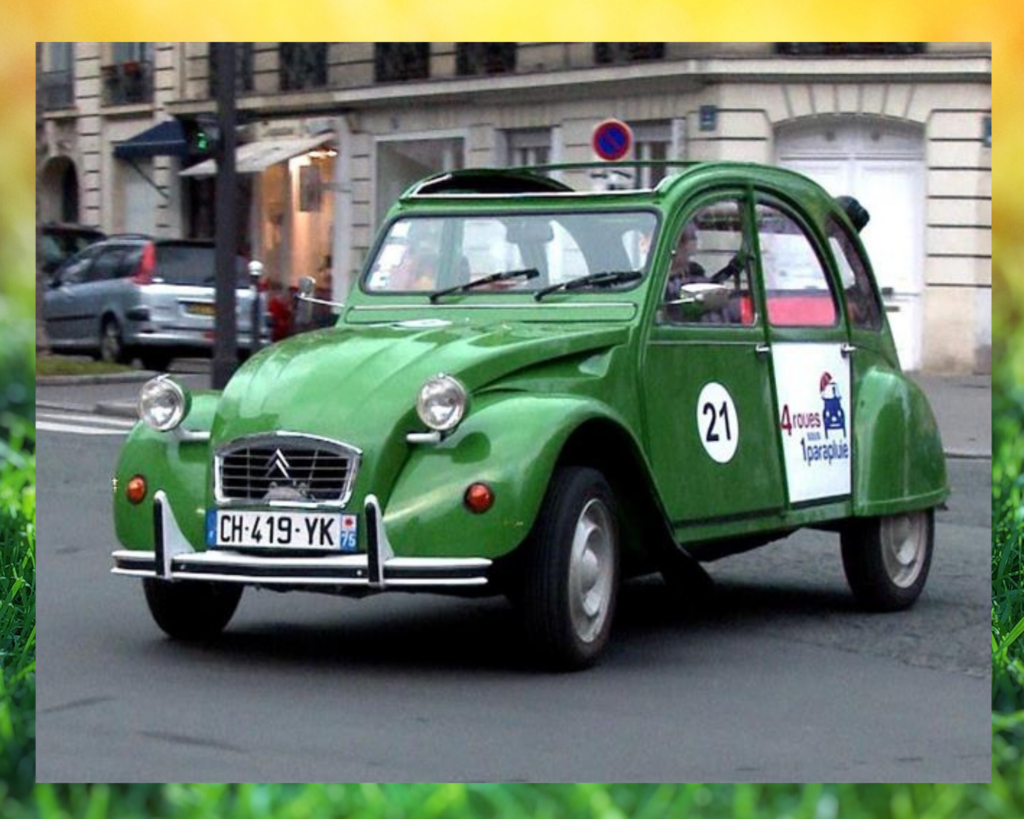
The 2 CV car
Why the 2 CV car from the Citroën company became so iconic, such as the baguette and the béret?
Because this convertible car became more than a simple means of transport: a lifestyle !
Manufactured from 1948 till 1960, this 4 seater-vehicule was initially created for rural social classes with few financial means; fuel efficient, easy to maintain, front-wheel-drive, maximal speed of 60 km/h, easy to drive…Thanks to the efficient suspension, the farmer driver should be able to cross a countryside field without breaking his fresh eggs basket!
Its name “2 CV” is the French abbreviation of “2 chevaux ” for the “2 chevaux fiscaux ” (literally the 2 fiscal horse-powers of the car). The 2 CV belongs to the top 10 French most sold vehicules. It also really became very trendy with families, students, etc…
I also remember what we used to play in the car on the long summer holidays road: the punch buggy ! . The winner was the first one to spot a green-colored 2 CV and he could make a wish ..:-)
It also naturally became a cultural reference in movies, books, TV, and theater !
The 2 CV car still has nostalgic fans, gathered in the French association “2 CV Clubs France“, with national & international meetings and rallies…
But if you want to taste the 2 CV adventure in Paris, do not hesitate to offer you an individual visit with the “4 roues sous un parapluie” agency : it will be an unforgettable moment!
-
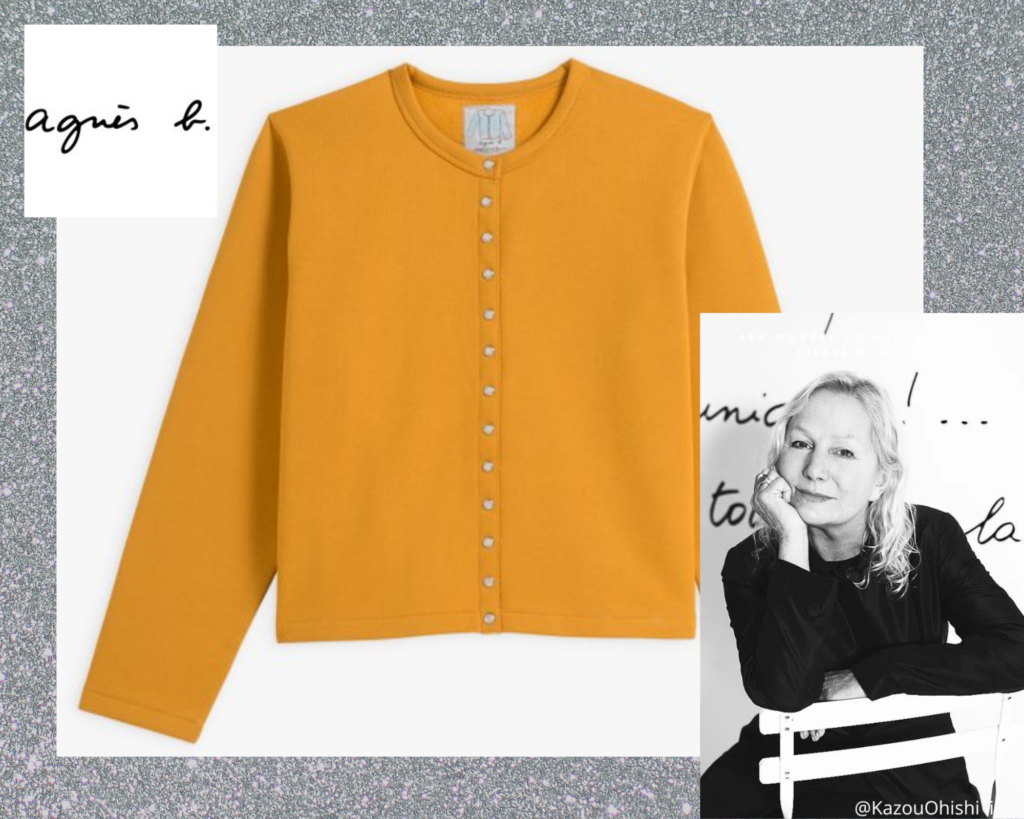
The snap cardigan from AGNES B.
In 1979, the young fashion designer Agnès B. (Bourgois) Troublé created what would turn out to be an iconic cloth: the snap cardigan!
The duffel cardigan was inspired by the classic cardigan she used to wear on her way to school. Years later, she imagined an easy way to open and close her everyday sweatshirts. The line of very closed snap buttons was inspired by the clothes of the Renaissance period.
Agnès B. had not stopped since to modify the form of her fashion myth. 40 models (short sleeves, V collar or stand-up collar, with a wood, full dress version…etc.), 148 colors, various materials (cotton, leather or cashmere), the variations were endless……! Children and men started to use it also.
And yes, this fashion myth is still manufactured in France (Troyes city) !
You can buy your original snap cardigan on Agnes B.’ e-shop, in her boutiques in Paris (and abroad) or in Agnes B. corners in the main Parisian Department Stores.
-

Sophie La Girafe
The most famous French giraffe !
It was created in 1961 by Mr. Rampeau, during Saint Sophie Day (May, 25 th).
It soon became a staple of the French baby toys !
“Sophie” helps the baby use all his 5 senses and is very helpful during the teeth growth.
It is made with natural latex (from Malaysia) and natural pigment ink . 100 % manufactured in France, 14 handmade actions are required to make this toy.
The “Sophie la Girafe” concept has also been diversified in many baby ranges of products.
Where can you buy it ? well……every where indeed : supermarkets, toys boutiques, Main Departments Stores… and even all around the world, such a success !!!!
And by the way, if you buy a Sophie La Girafe set, you are directly contributing to the Giraffe Conservation Fondation (GCF) in Africa !
-

The Marseille Soap
Have you ever heard about the Marseille soap? A traditional soap made in the Marseille city area, in southern France?
Nearly all French households have used it at least once! It can be used for home, laundry and body cares!
The soap story goes back as far as the Mesopotamian times (2800 B.C.). The Alep soap’s recipe spread around the Mediterranean Sea, in the VIII century. Then, of course, it arrived in the south of France. The Massalia city (Massilia during the Roman times and Marseille city now) was initially a Greek Colony and an important trading port. It was the perfect place for the soap activity to implement. The recipe’s main ingredients were easy to find in this area: the oil (extracted from the olive harvested), the natural ash (derived of plants grown in saline environnement), and the salt. The city climate (hot weather and strong wind) was also perfect for drying the soaps.
The soap activity had thus been expanding there from the Middle Ages (XII century) to the early XX century (with nearly 100 soap work-shops in the area). The Marseille heavy bars of soap became famous and were sold in Europe and the Mediterranean region.
Through times, production process has also been regulated. In 1688, Colbert (Minister of Louis the XIV) regulated the manufacture and the ingredients. In 1812, Napoleon established a trademark logo and specifications (soap manufactured in the Marseille city area only…).
But with the 2 World Wars and the competition with synthetic detergents, the Marseille soap industry suffered a sharp decline.
Luckily, since the 1980s, there is a revival of the Marseille soap! Thanks to the consumer demand for natural, authentic, and French products!
3 criteria define the most traditional manufacture of Marseille soap:
1/ The soap composition: 4 ingredients only! Vegetable oils (72% at least), ash, sea salt and water…no perfumes, dyes, preservatives
2/ The geographical origin: Marseille city and/or the Bouches du Rhône department (13) only
3/ The manufacturing process in 5 steps (NB: Oil and ash are cooked in a cauldron)
In 2011, four manufacturers gathered together under a professional guild (the “Union des Professionnels du Savon de Marseille (UPSM)”). They intend to preserve the traditional Marseille soap’s quality and its manufacturing process.
The Marius Fabre brand (e-shop, retailers shops in Paris + the Marius Fabre boutique,26 rue de Turenne, 75003 Paris).
The Savonnerie du Midi brand (e-shop)
The Savonnerie Fer à Cheval Brand (e-shop, retailers shops in Paris available)
The Savonnerie Le Sérail (e-shop in French only)
They are also waiting for draft legislation from the French government to define a Geographical Indication (GI) for their soap.
These four companies already benefit with the “Entreprise du Patrimoine Vivant (EPV)/ Living Heritage Label)”. It is awarded by the French Ministry of the Economy, Industry, and Employment for the excellence of traditional and industrial skills.
No doubt, this is a perfect true French gift!
